Layering Site and Program for Conceptual Clarity
“We hold to the idea that architecture is not simply reducible to the container and the contained but that there exists a dynamic exchange between the life of matter and the matter of our life.”
- Jesse Reiser and Nanako Umemoto. Atlas of Novel Tectonics. Princeton Architectural Press, 2005.
- Jesse Reiser and Nanako Umemoto. Atlas of Novel Tectonics. Princeton Architectural Press, 2005.
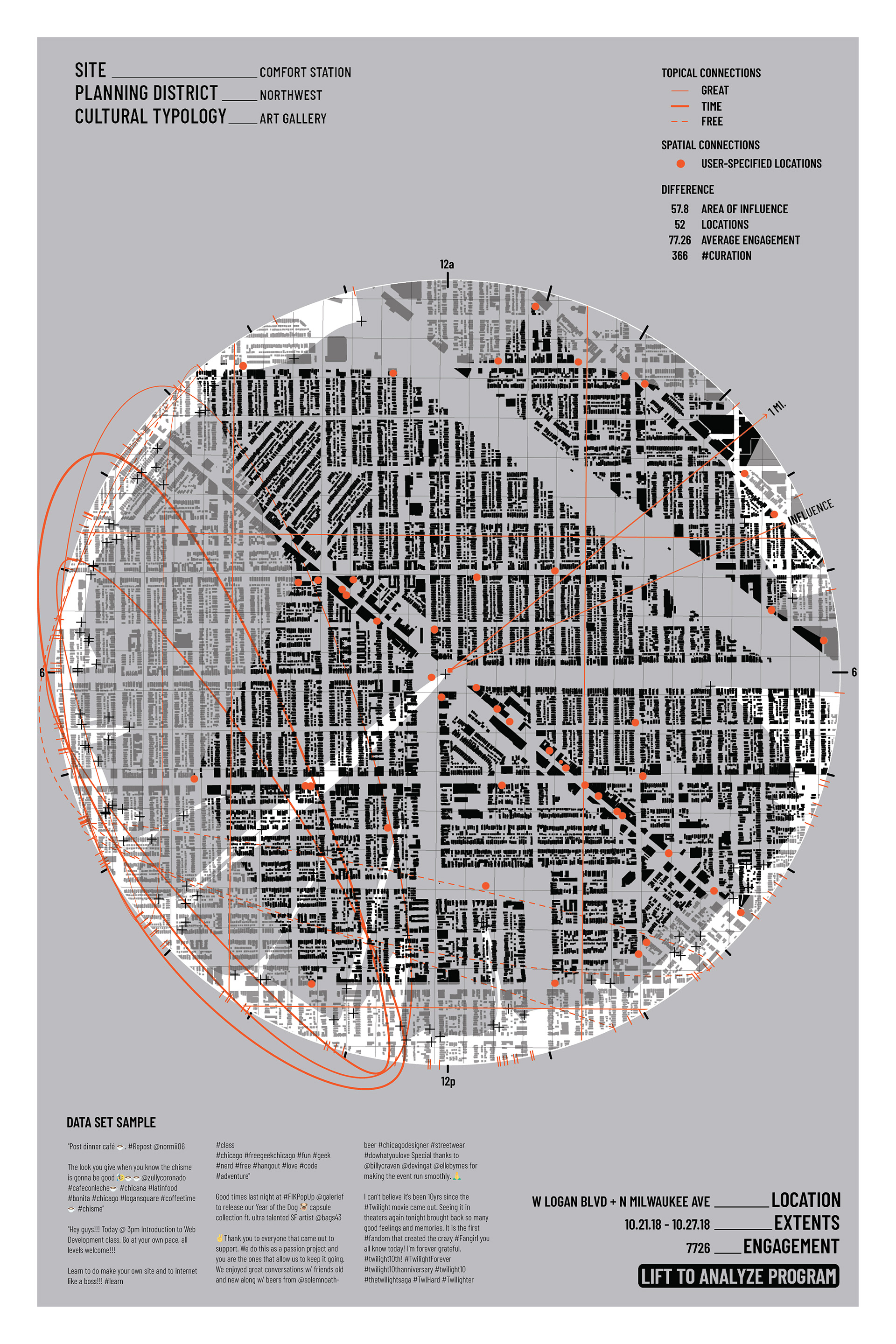
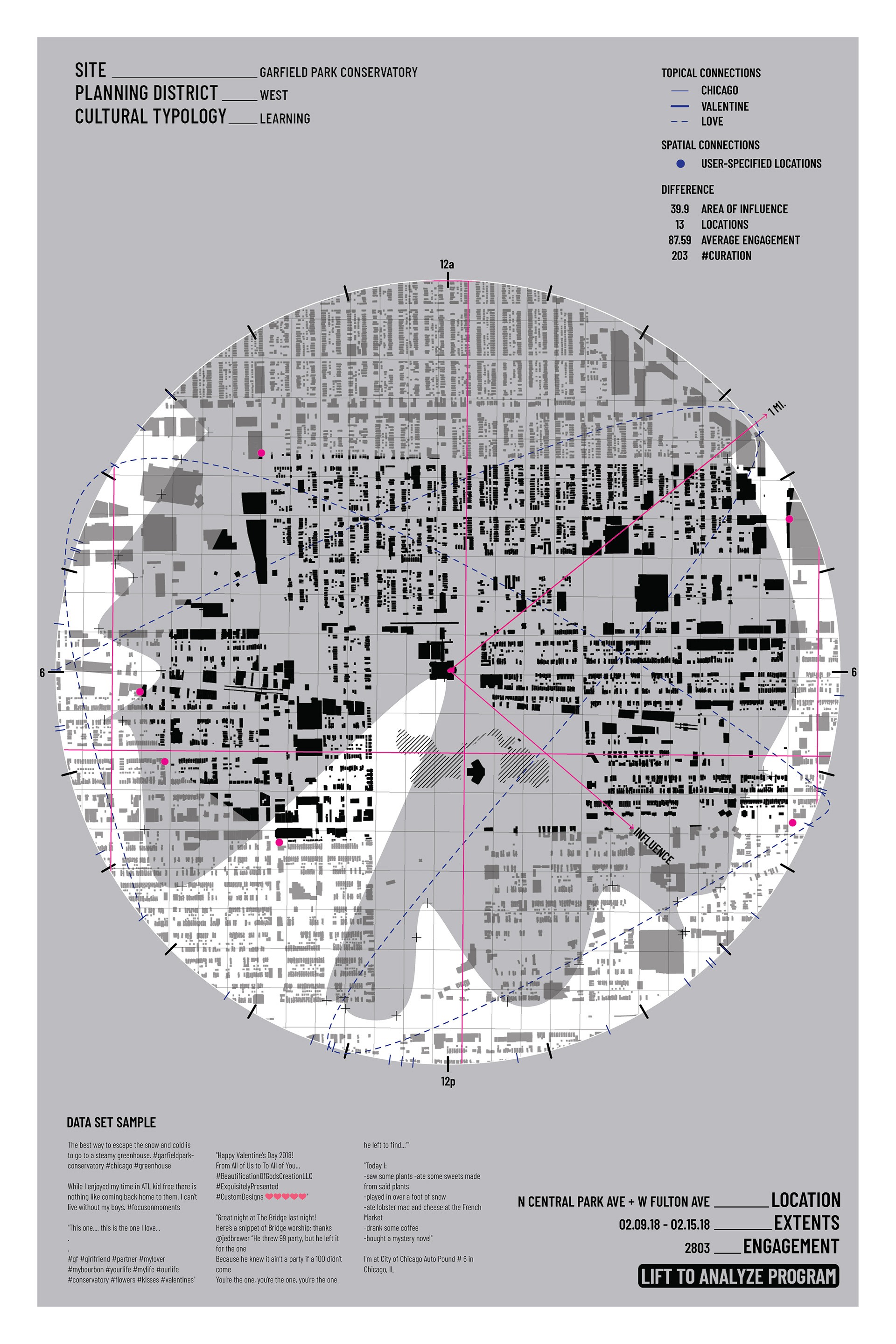
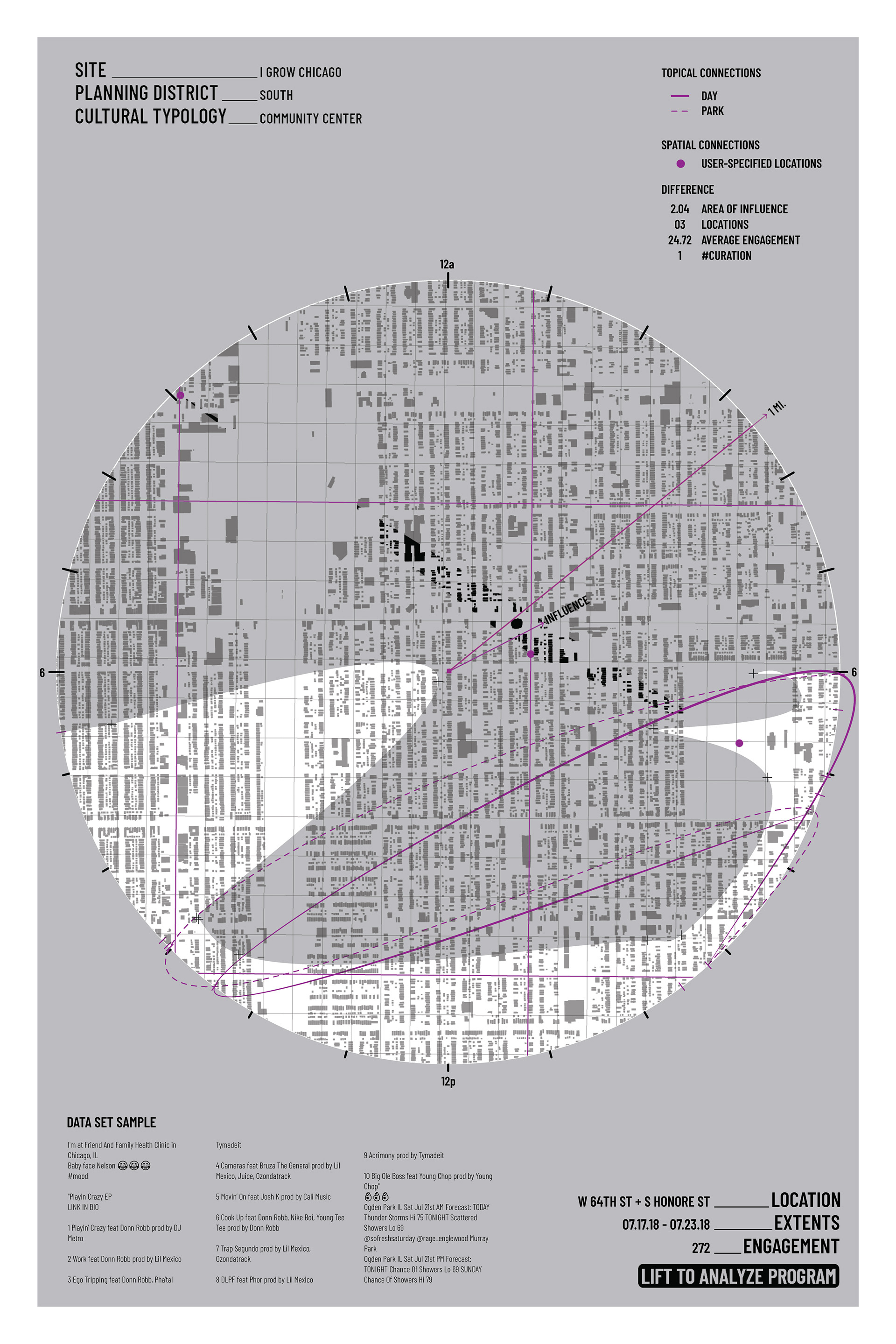

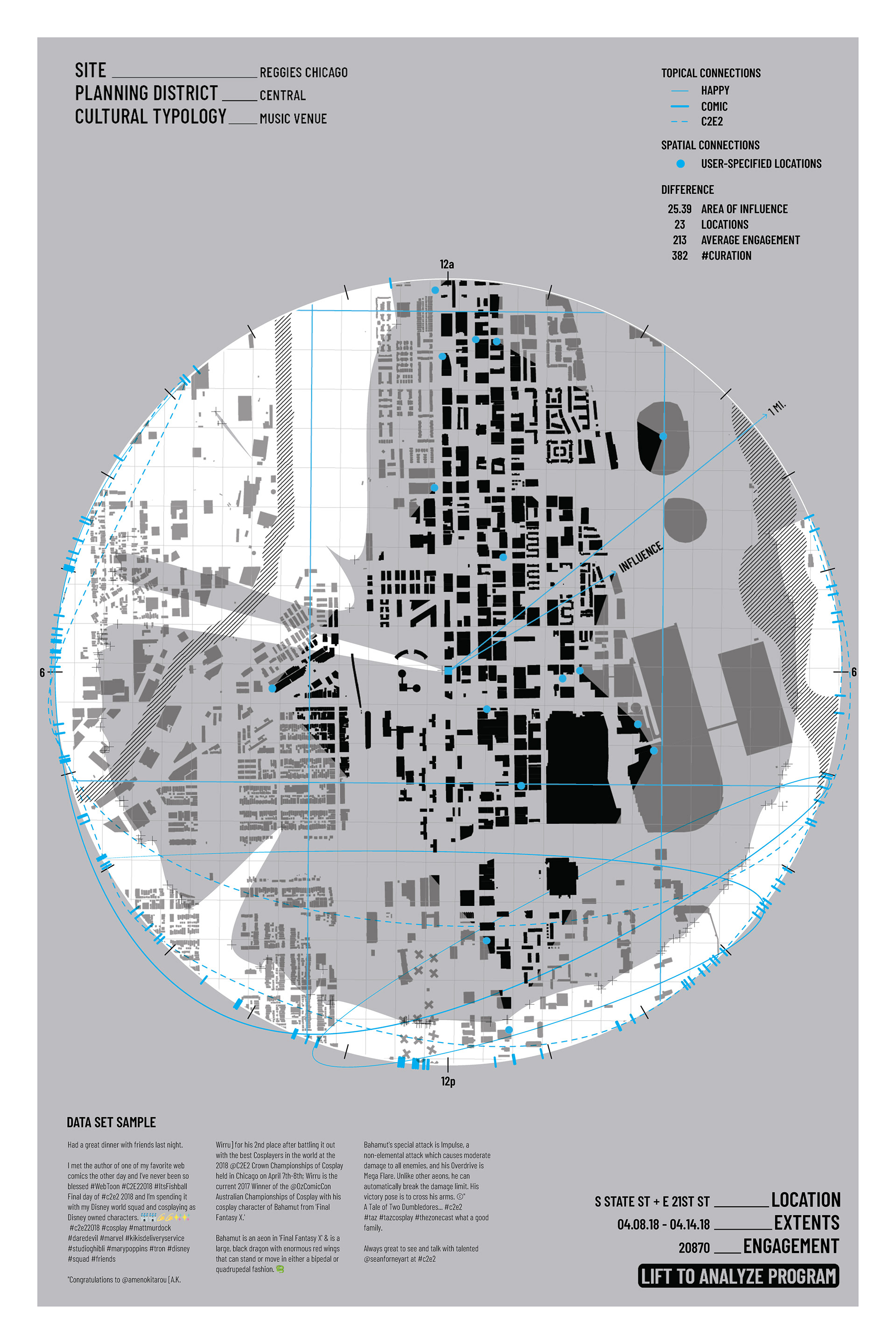
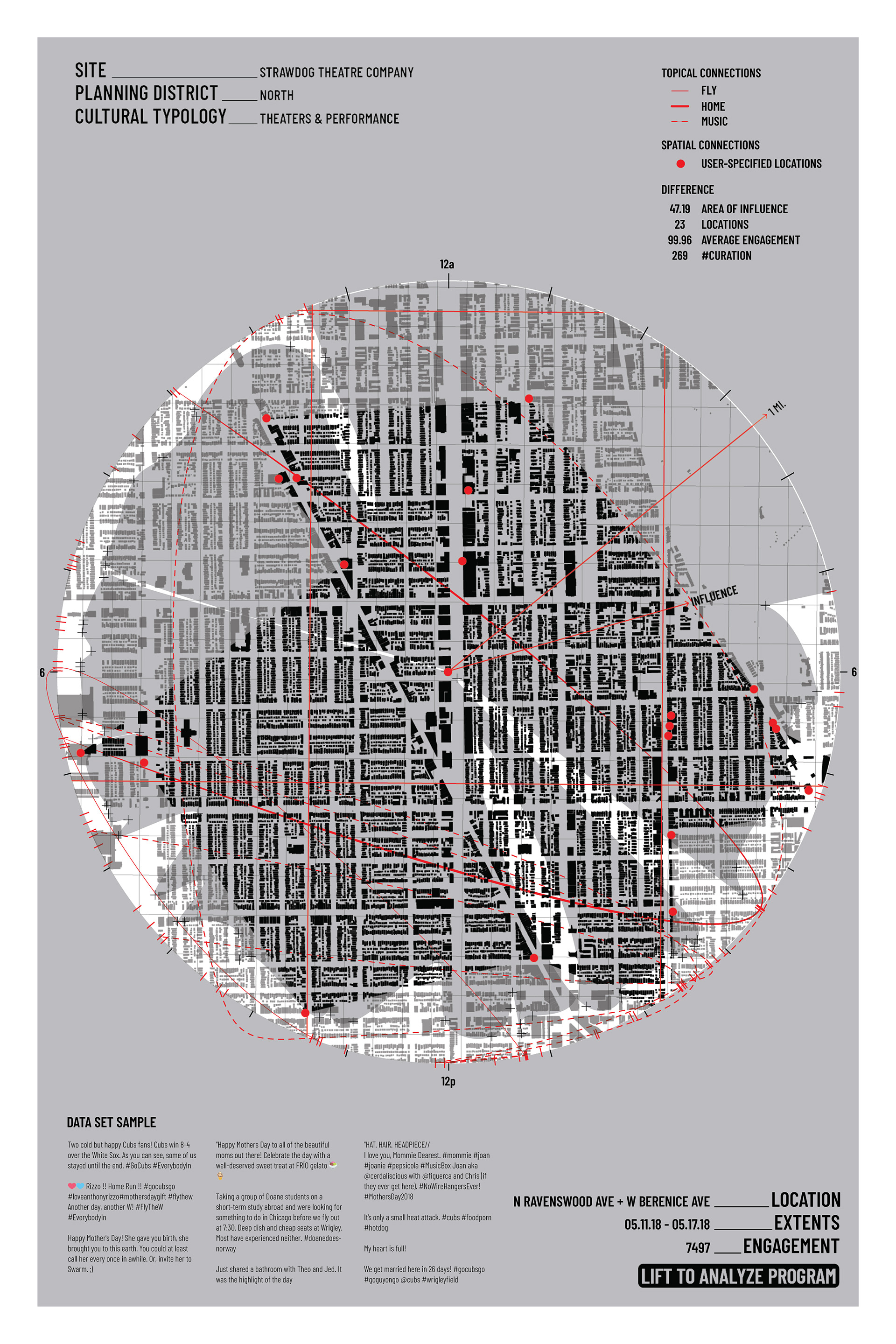
Our data permeates every aspect of the lived experience-- from GPS to thermostats, restaurant reviews to online education. Architecture has become the backdrop of these digital realities. In this world, can data architect? Can data created by people in a self-published, self-curated, mediated, and adaptive digital space partake in the action of organizing the complex systems of physical spaces? This work seeks to abolish the notion that cultural institutions are the only means for documenting, curating, and archiving culture. Connecting architecture and data, we can re-evaluate the initial design phase and produce foundational ideas for building. Site plan and program diagrams are repositioned as tools for the formation of user-focused ideas and truly cultural architecture. The process of conceptualizing is fundamentally redesigned.
Through digital networks like Twitter and Instagram users are primed to expect adaptive environments. With a simple like or forward, the digital condition is redesigned-- algorithmically tailored. Evaluating seven cultural sites across the city of Chicago in each of the city's planning districts hijacks these algorithmic processes. Instead of setbacks and property lines, Tweets and Instagram posts are mapped chronologically to user-specified locations. This denotes a circle of influence within a one-mile radius of the centralized site. Retooling the site plan as a cultural conduit, data architects the user-documented appropriations of physical space.
This cultural cartography requires the ability to see beyond the physical into the digital. The program diagram expands upon the context of the previously established spaces. Narratives are organized and grouped making connections beyond square footage and spatial adjacency. Quantitative elements of engagement are paired with qualitative topical groupings to produce a more accurate depiction of adaptive space. While the reconsidered site plan is an exploration in human-scale mapping, the program diagram is the representation of the individual's role in producing a greater whole. In this way, data architects a catalog of cultural redundancy, informality, and relevance.
When joined to become one entity, the reconsidered site and program provide the basis for a digitally-influenced conceptual and physical space. The ideological foundation of future cultural institutions can be as broad or specific as its digital context suggests. Design narratives can now respond to community contexts and construct a culture beyond the property line. Crafted space is restored as the setting for the matters of our lives. Architect is no longer a noun. The action is innate, instinctive. This design research methodology determines that data can architect-- and it is personal.